Type Pasta Created by Osem Place of origin Israel | Course Side dish Category Soup pasta | |
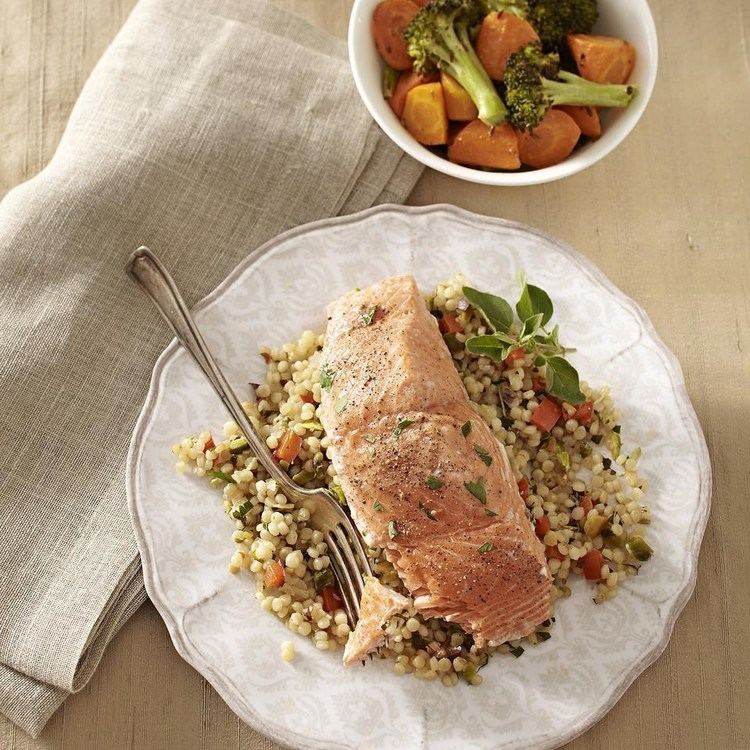 | ||
Alternative names Israeli couscous, Jerusalem couscous, pearl couscous Characteristic Toasted pasta shaped like rice-grains or little balls. Dish ideas Ptitim salad with herbs, Spicy ptitim Similar Couscous, Orzo, Israeli salad, Bulgur, Shakshouka | ||
Ptitim (Hebrew: פתיתים, literally flakes) is a type of toasted pasta shaped like rice-grains or little balls developed in Israel in the 1950s when rice was scarce. Outside Israel it is sometimes marketed as Israeli couscous or Jerusalem couscous. In Israel it became known as "Ben-Gurion rice" (Hebrew: אורז בן-גוריון órez Ben-Gurion). Today however, it is mainly called "ptitim" across the people.
Contents
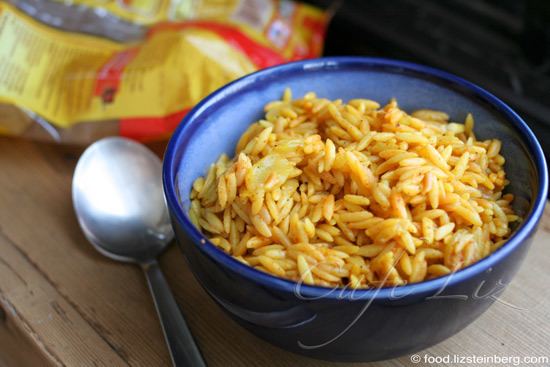
History
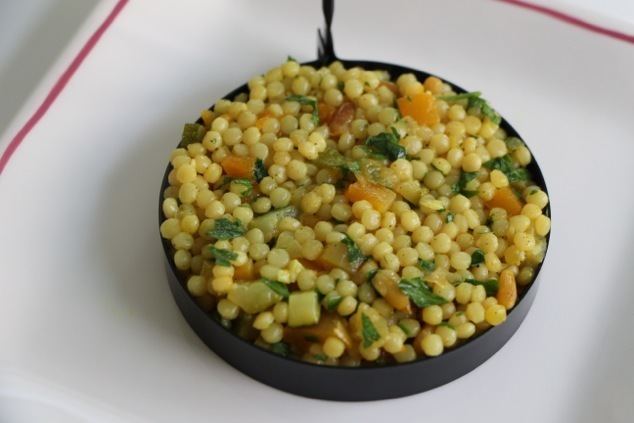
Ptitim was invented during the austerity period in Israel (from 1949 to 1959). Israel's first prime minister, David Ben-Gurion, asked Eugen Proper, one of the founders of the Osem food company, to quickly devise a wheat-based substitute to rice. Consequently, it was nicknamed "Ben-Gurion's rice" by the people. The company took up the challenge and developed ptitim, which is made of hard wheat flour and toasted in an oven. The product was instantly a success, after which ptitim made in the shape of small, dense balls (which the company termed "couscous") was added to the original rice-shaped ptitim.
Preparation

Ptitim is popular among Israeli children, who eat it plain, or mixed with fried onion and tomato paste. Ptitim are now produced in ring, star, and heart shapes for added appeal. For health conscious consumers, there are also whole-wheat and spelt flour ptitim.
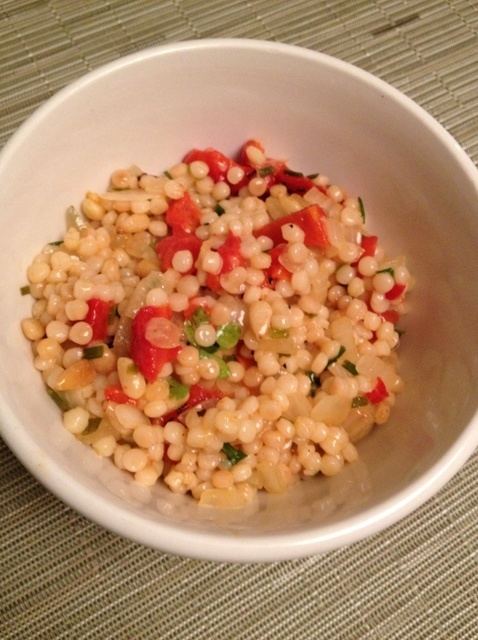
While considered a children's food in Israel, ptitim is sometimes treated as an ingredient for "trendy delicacies". In the United States, it can be found on the menus of contemporary American chefs, and can be bought in gourmet markets.
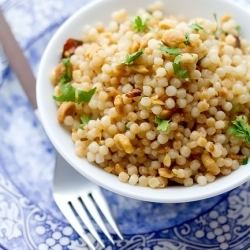
Ptitim can be used in many different types of dishes, both hot and cold. They retain their shape and texture even when reheated, and they do not clump together.
Commonly, ptitim are prepared with sautéed onions or garlic (vegetables, meat, chicken or sausages can also be added); the ptitim are then added, and fried for a short time before adding water. Ptitim can also be used as a substitute for pasta or rice. They can also go in soup, can be baked, served in a pie, or made as a risotto. American chef Charlie Trotter has produced a recipe for ptitim with spinach, artichoke, and Kalamata olives.
Similar products
Pearl-shaped ptitim is similar to the Levantine pearled couscous known as maftoul or mograbieh in Palestine, Jordan, Syria and Lebanon. It is also similar to the Kabyle Abazine and the Sardinian Fregula. Rice-shaped ptitim are similar to orzo. Ptitim is not the same as Mograbia (aka Maftoul, Pearl Couscous etc.), though the two can be used similarly. Mograbia is a coated couscous; Ptitim is an extruded paste. Note as well that the word "Maftoul" is sometimes incorrectly used in America to refer to Israeli couscous.
